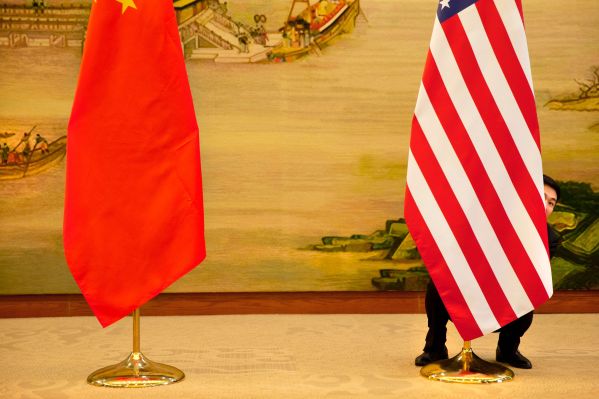After significant back-and-forth over the past few months, the White House intends to follow through with a pledge to place tariffs on imported Chinese technology goods while also tightening restrictions on investments by Chinese firms into American companies.
In a statement posted by the White House this morning, the administration said that it would impose a 25 percent tariff on $50 billion of Chinese high-tech goods “containing industrially significant technology.” That follows the conclusion of the U.S. Trade Representative’s Section 301 investigation into China’s industrial and intellectual property policies. What goods will be included in the tariff policy has been up for debate, but the final list will be released on June 15th. This package of tariffs is different than a separate package of tariffs focused on steel and aluminum production announced earlier this year.
The regulations around investment restrictions by Chinese companies will be announced at the end of June. The administration will also continue to litigate a case at the World Trade Organization over intellectual property protections.
All of these announcements should be taken with a shaker’s worth of salt though, since these are just the latest cards being played in a series of interconnected negotiations both internal to the White House and external with the Chinese government.
Internally, the White House has been riven with differences over how aggressively to prosecute the Chinese over its industry practices, with financiers like Treasury Secretary Steven Mnuchin taking a more flexible line while others like U.S. Trade Representative Robert Lighthizer and Director of the White House National Trade Council Peter Navarro have pushed for a much more aggressive approach. As different actors curry favor with President Donald Trump, their respective policies seem to appear and disappear.
Externally, the U.S. and China are engaged in a protracted multi-dimensional negotiation over the status of trade between the two countries. That includes both the approval of Qualcomm’s merger with NXP from the U.S. side, as well as re-authorizing a tech export license to China’s telecommunications manufacturer ZTE on the Chinese side. Expect more announcements and counter-announcements to come in the coming weeks as these negotiations continue.
For tech companies and startups, the uncertainty and lack of clarity around these tariff policies is difficult to manage. Product road maps and supply chains are being reconsidered as each new policy gets announced, making it difficult to manage future launches. While no one wants a tariff in the tech industry, clarity would certainly make any tariff much easier to stomach.
Even more challenging is the looming deadline for the announcement of investment restrictions. Given that venture capital rounds generally take several weeks to close because of the due diligence process, and the deadline for the announcement of these new investment restrictions is at the end of June, Silicon Valley founders should be hesitant to accept Chinese VC dollars while they await regulatory certainty from Washington.
I’ve written before that the national security implications of Chinese venture capitalists are overblown, but ultimately, the administration is going to have to develop a rule, and until more information is provided, any investment from a Chinese-connected firm could potentially be cut off at the last minute. Expect more developments on all of these policies as U.S. and Chinese negotiators continue hashing out a deal around trade.
